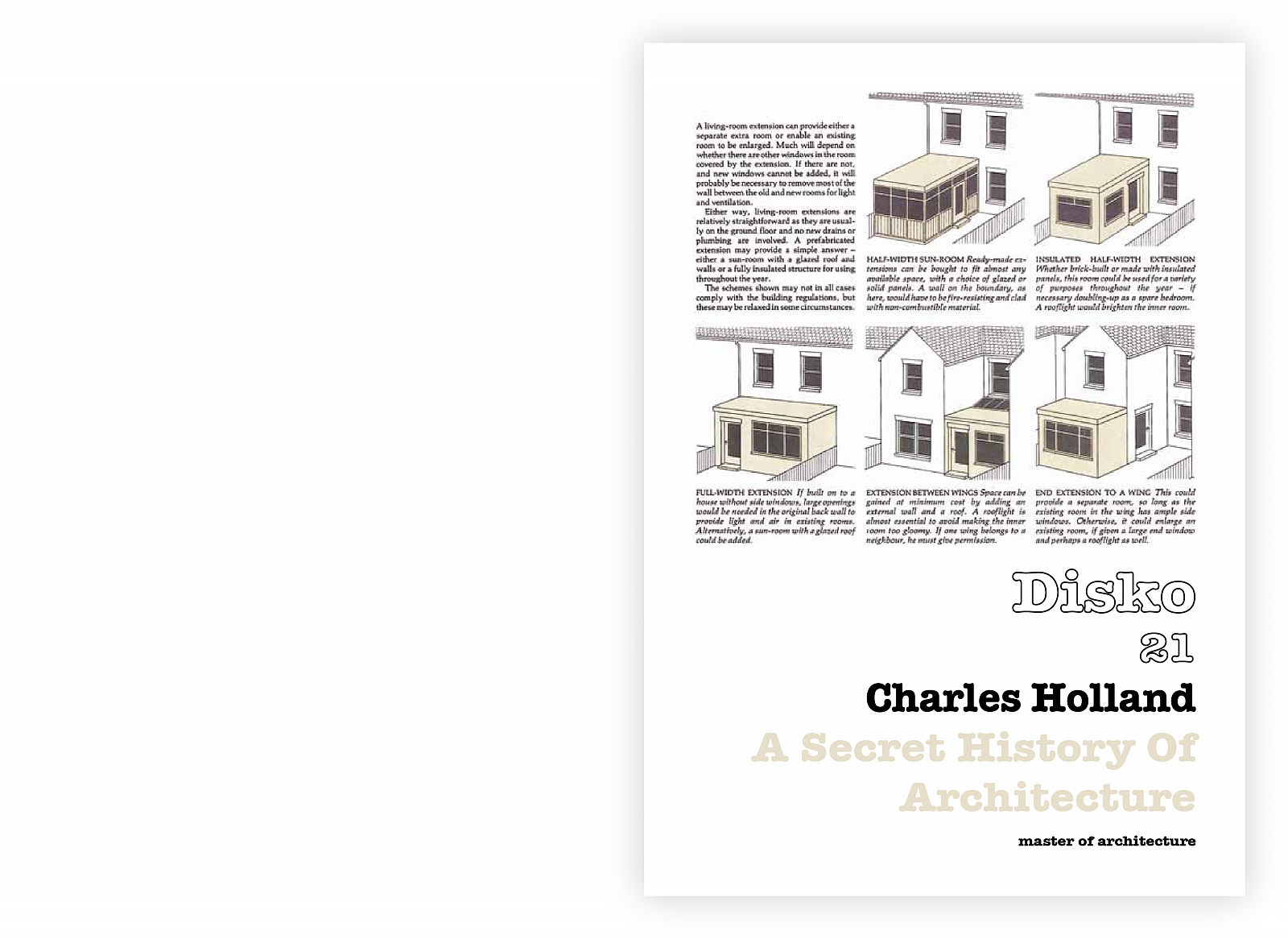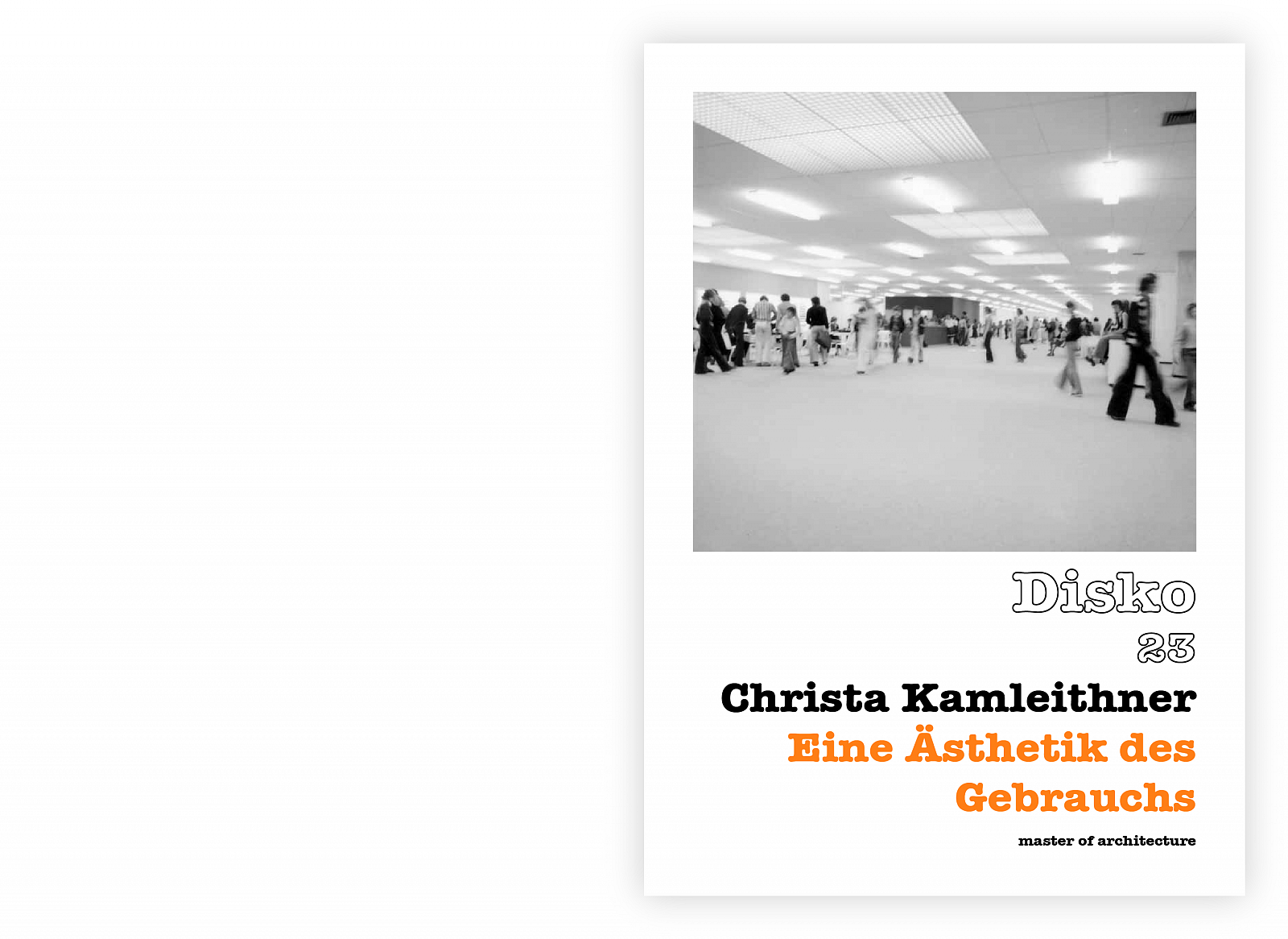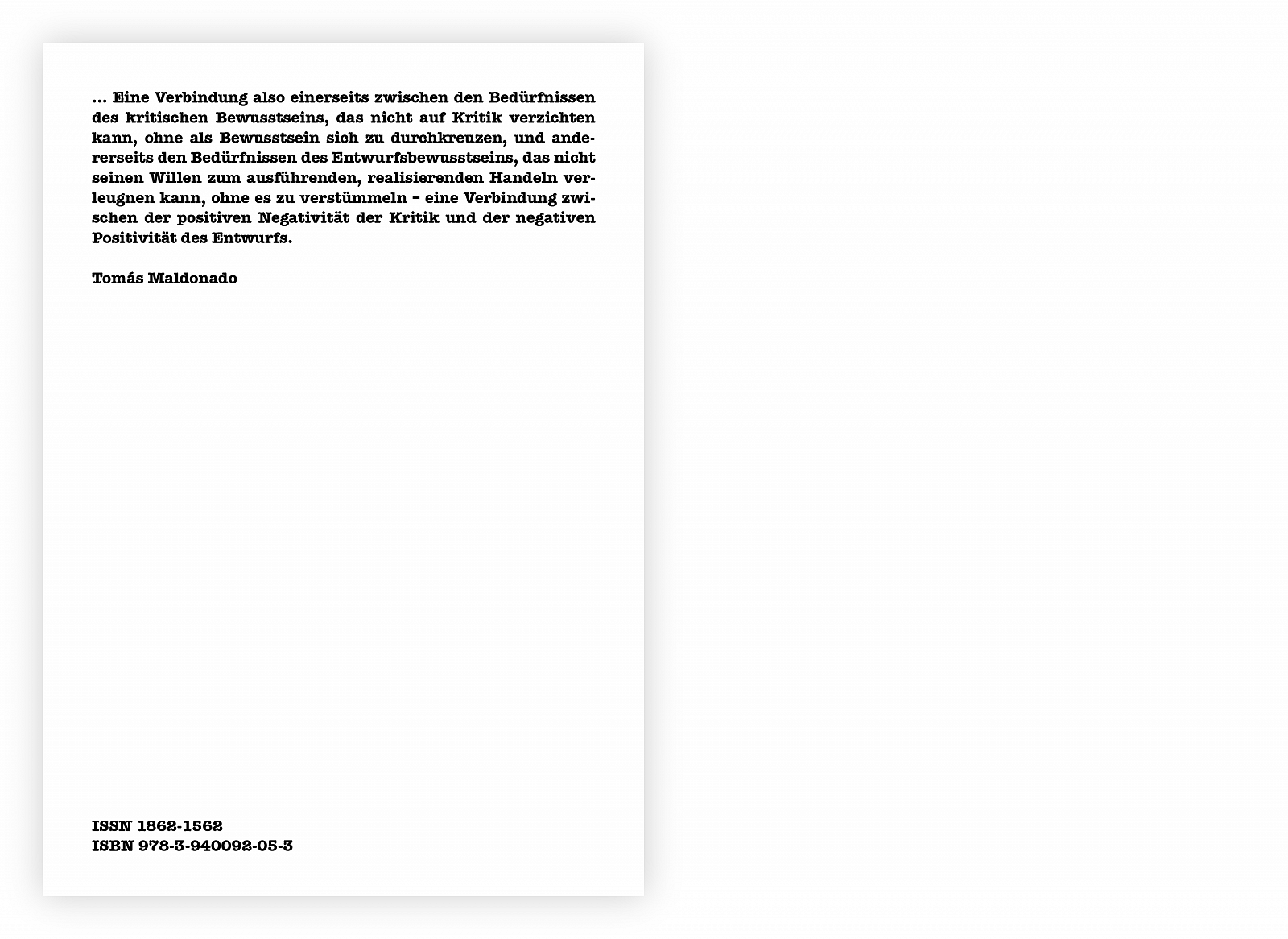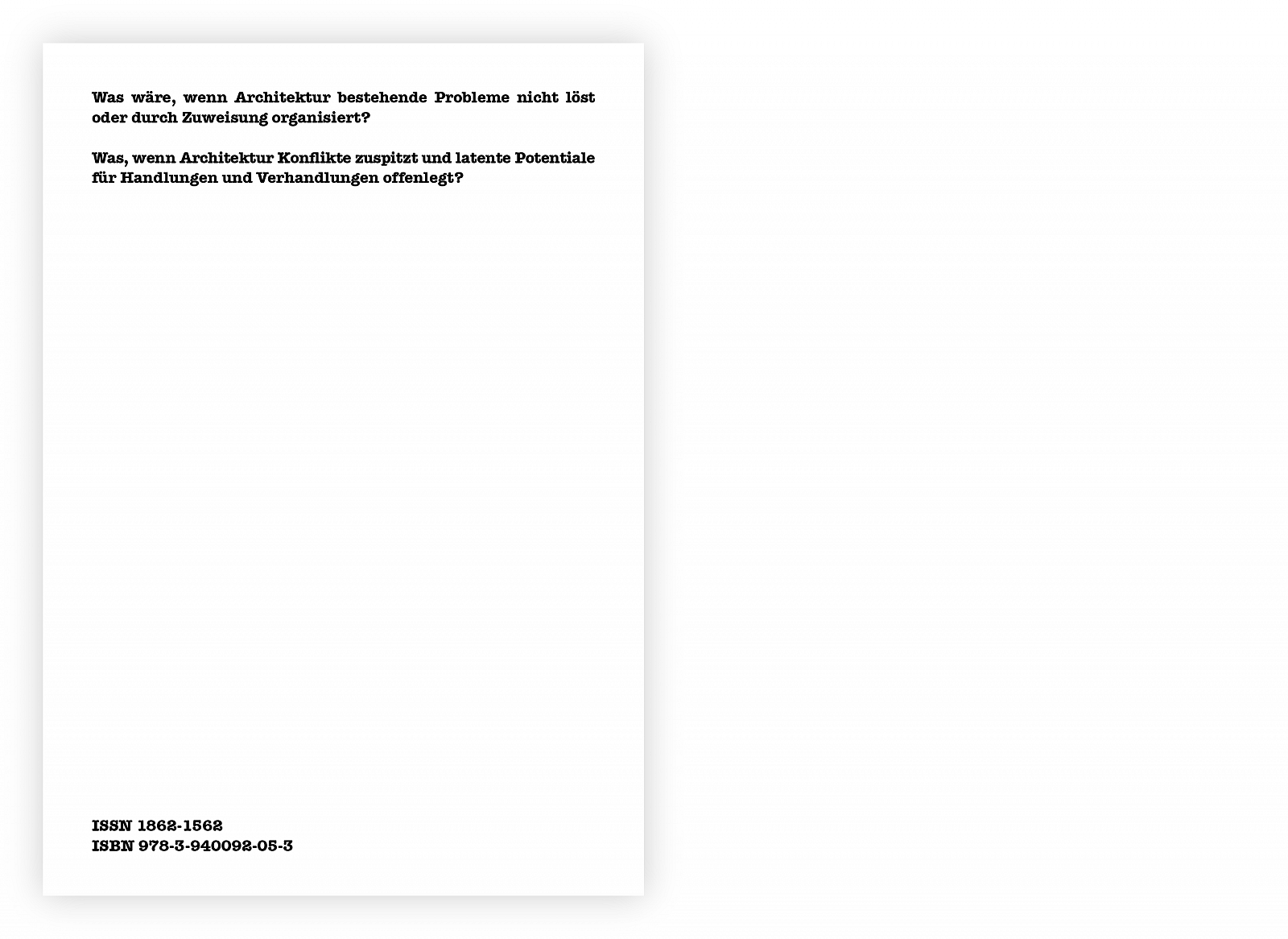Disko (acronym for Diskurs-Kontinuum) was a publication series of 0093 a42.org, the master’s program in architecture and urban research directed by Arno Brandlhuber at the Academy of Fine Arts Nuremberg. The aim of this series was to communicate the research and debates taking place within the study program to the outside world. Disko appeared between 2006 and 2013 in packages of three to six issues, each of which was produced in an economical DIN A5 format.
The issues of Disko 20-25 are the result of two symposia organized by the Chair of Architecture and Urban Research under the title Architecture without Architecture at the Academy of Fine Arts Nuremberg (AdBK) in 2008 and 2009. The initial thesis of the symposia was a twofold problem: a) with the “failure of modernism” architecture has not only abandoned its social project, but also seems to be discredited as a representative of the concerns of society as a whole; b) contemporary architecture is so far caught up in its power of representation in the media (and instrumentalized in terms of construction economics) that it has largely eluded the potential of built space. Architecture without architecture intends at this point to “zero” the discourse. The booklets are to be understood as contributions to an alternative historiography as well as approaches to a renewed architectural practice.
Download Disko 20: Joachim Krausse, “Unsichtbare Architektur—Knud Lönberg-Holm und die Structural Study Associates”
Download Disko 21: Charles Holland, “A Secret History of Architecture”
Download Disko 22: Heinz Emigholz, “The End*—22 Blätter aus Die Basis des Make-Up”
Download Disko 23: Christa Kamleithner, “Eine Ästhetik des Gebrauchs—Die architektonische Position Ottokar Uhls”
Download Disko 24: Jesko Fezer, “Deprofessionalisierungstendenzen (damals, in der Entwurfsmethodik)”
Download Disko 25: ifau and Jesko Fezer, “12 Arbeitsthesen”
Disko 20
In 1932 a remarkable opposition to the International Style and the aestheticism of Hitchcock and Johnson formed in New York. The protagonists of the Structural Study Association, Buckminster Fuller, Theodor Larson, Frederick Kiesler, and the Danish architect Knud Lönberg-Holm created a platform for a structural renewal of authentic functionalism under conditions of progressive industrialization and technical innovation with the short-lived magazine Shelter. Their turn to the fundamentals of architecture and building production led to new concepts of designing and constructing specific information tools and information environments. Kiesler’s Correalism and the Environment Controlling of Fuller, Lönberg-Holm and Larson open a new reference system of architecture and the relationship between man and environment.
Disko 21
…The architecture of the home is, then, an architecture of time as well as space. It is about the spatial adaptations of owners over the lifetime of the building. The “success” of the architecture may lie therefore in its ability to absorb and accommodate change rather than its ability to convey an essential and immovable meaning. …
Disko 22
…And one can then perhaps meditate on what architecture is, was, or could be. But to make this happen, the images must be separated from the words. Because what these images essentially have to tell us are not words and sentences, but spaces and surfaces and their relationships, because these are the components of the architectural experience. In order to be able to think about spaces, we must therefore represent spaces…
Disko 23
I would like to speak of an “aesthetics of use,” which includes two aspects: first, a specific conception and appearance of architecture that supports use, and thus always includes the social and temporal dimension, and second, an aesthetic consideration of use itself.
Disko 24
“A connection, then, between the needs of the critical consciousness, which cannot do without criticism without thwarting itself as consciousness, and on the other hand, the needs of the design consciousness, which cannot deny its will to carry out, realizing action without mutilating it—a connection between the positive negativity of criticism and the negative positivity of the design.”
Tomás Maldonado
Disko 25
What if architecture does not solve existing problems or organizes them by assignment? What if architecture exacerbates conflicts and reveals latent potentials for action and negotiation?

© Brandlhuber+ Team

© Brandlhuber+ Team

© Brandlhuber+ Team

© Brandlhuber+ Team

© Brandlhuber+ Team

© Brandlhuber+ Team

© Brandlhuber+ Team

© Brandlhuber+ Team

© Brandlhuber+ Team

© Brandlhuber+ Team

© Brandlhuber+ Team

© Brandlhuber+ Team